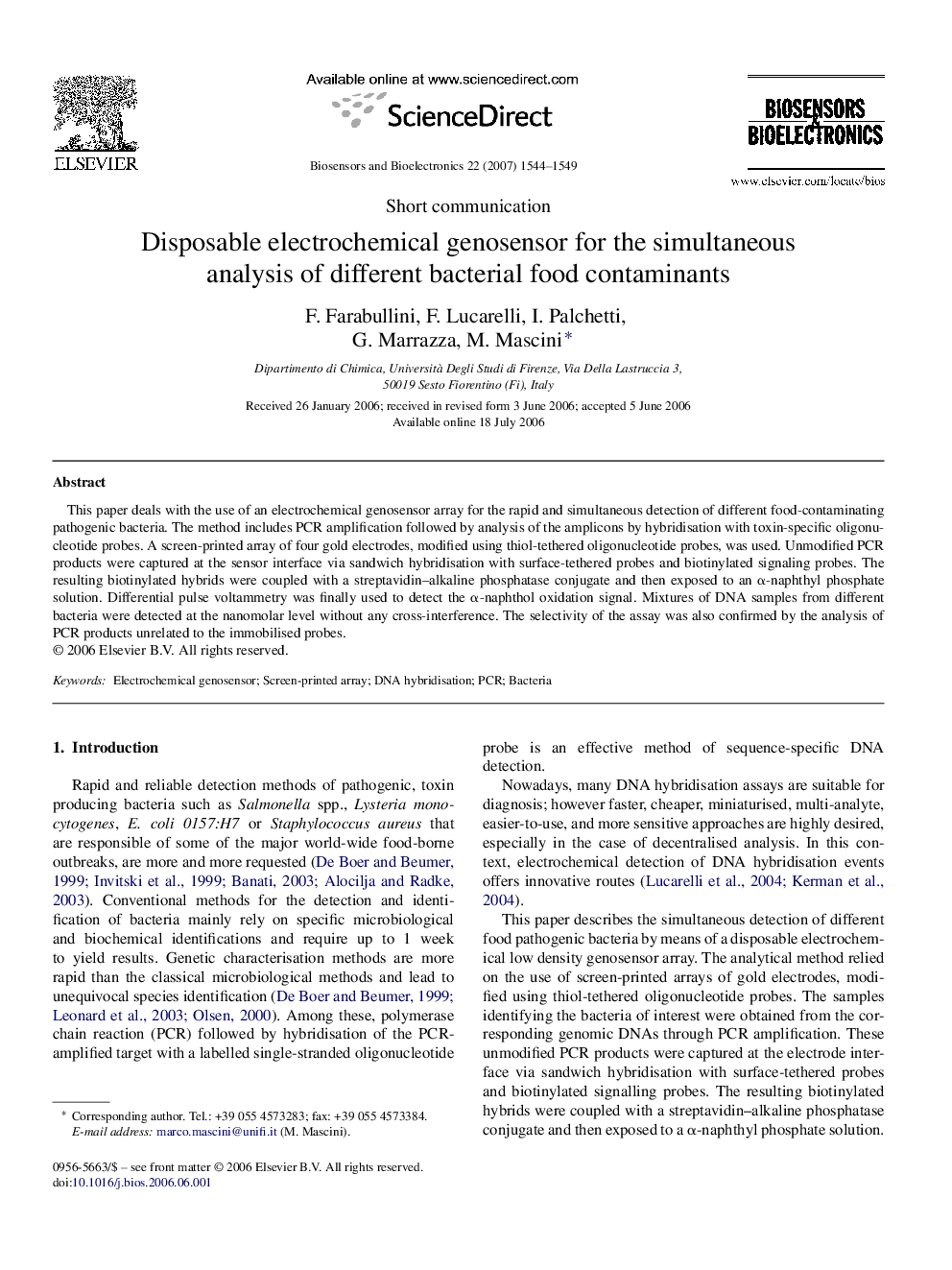| Article ID | Journal | Published Year | Pages | File Type |
|---|---|---|---|---|
| 870238 | Biosensors and Bioelectronics | 2007 | 6 Pages |
This paper deals with the use of an electrochemical genosensor array for the rapid and simultaneous detection of different food-contaminating pathogenic bacteria. The method includes PCR amplification followed by analysis of the amplicons by hybridisation with toxin-specific oligonucleotide probes. A screen-printed array of four gold electrodes, modified using thiol-tethered oligonucleotide probes, was used. Unmodified PCR products were captured at the sensor interface via sandwich hybridisation with surface-tethered probes and biotinylated signaling probes. The resulting biotinylated hybrids were coupled with a streptavidin–alkaline phosphatase conjugate and then exposed to an α-naphthyl phosphate solution. Differential pulse voltammetry was finally used to detect the α-naphthol oxidation signal. Mixtures of DNA samples from different bacteria were detected at the nanomolar level without any cross-interference. The selectivity of the assay was also confirmed by the analysis of PCR products unrelated to the immobilised probes.
